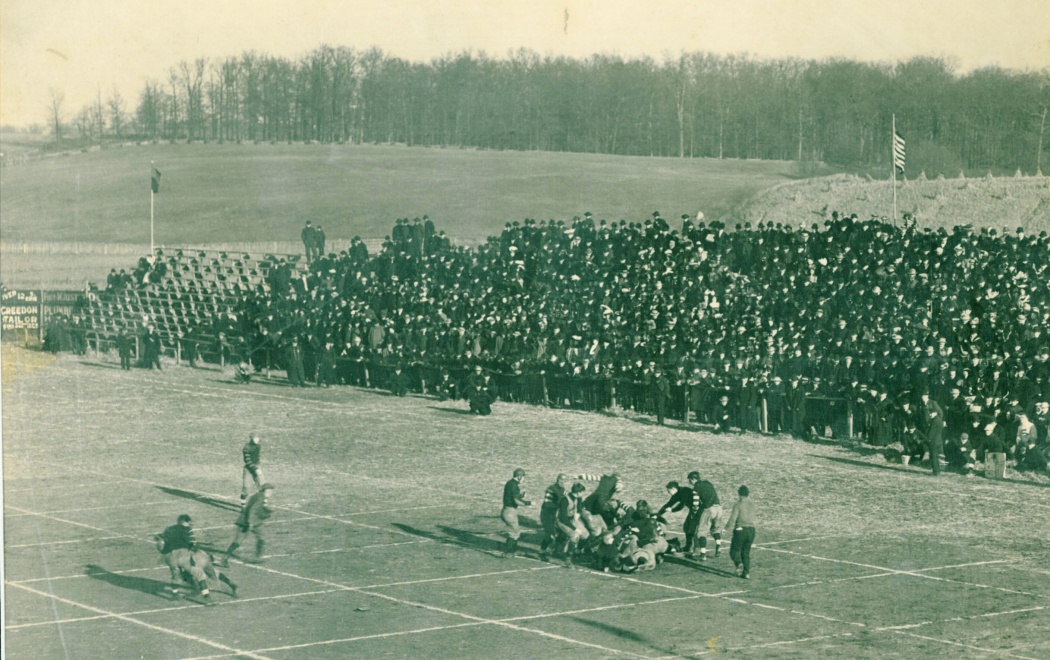Markings on 'Gridiron' Evolve Over Time
1/26/2021
The Gridiron.
Every football fan has heard the term. It has become synonymous with the sport’s playing field. Just saying the word can conjure up the voice of John Facenda from NFL Films narrating highlights of the 1960s Green Bay Packers and the “frozen tundra” of Lambeau Field.
The word “gridiron,” as it relates to football, however, traces its origins decades before Vince Lombardi roamed a sideline in any stadium.
So, what’s the history behind football’s playing field?

The dimensions of a National Football League field have remained unchanged since the league's founding in 1920. The field measures 53 1/3 yards wide and 100 yards long between goal lines. It also includes a pair of end zones 10-yards deep.
There have been changes, however, to both the size of the field and markings on it since professional football's birth in 1892. When William "Pudge" Heffelfinger, football’s first paid player, received $500 from the Allegheny Athletic Association, the length of the field was actually 110 yards long and included a 55-yard line. Also at that time, the end zones were essentially nonexistent. The goal line represented the end of the field.
It wasn’t until 1912 that the length of the field was changed to 360 feet (120 yards), while the width remained the same (53 1/3 yards). The field was 100 yards from goal line to goal line, with 10-yard end zones – the same size of a football field today.
How about the hashmarks?

The hashmark is one of the most important lines on a football field. The marking determines ball placement throughout a game. There are two sets of hashmarks (2 feet long and 4 inches wide) placed at five-yard intervals exactly 70 feet and 9 inches at a parallel position from each sideline.
If a ball carrier is downed anywhere between the hashmark and its corresponding sideline, the ball is placed at that respective hash distance. If a ball-carrier is downed in between the two hashmarks, the ball is spotted exactly where the player was downed. That wasn’t the case before 1933.
Prior to 1933, the hashmark didn’t exist. The ball was simply marked where the player was tackled down, and the next play began where the previous play ended. This resulted in some interesting offense if the runner went out of bounds or the play ended near the sideline. In that case, the offense had to adjust to an extremely unbalanced formation and run to the wide side. This gave defenses a distinct advantage.
The concept of placing the ball on a hashmark grew quick favor following the 1932 NFL playoff game between Chicago Bears and the Portsmouth Spartans (today the Detroit Lions). The game was moved indoors to Chicago Stadium due to extremely frigid and blizzard-like weather conditions.
Because a wooden wall separating the field from the spectators was practically on the sideline, a special rule was created for the game to bring the ball back in 15 yards if the offensive team desired. A quirk to this allowance was that the offensive team lost a down if the spot was moved.
The hashmark was written into the NFL's first rule book in 1933 at 10 yards from each sideline. Over the years the distance of the hashmarks has increased. In 1935, the distance grew to 15 yards. Ten years later, the hashes were moved again to 20 yards from the sideline. Finally, in 1972, the hashmarks were moved to where they remain today at 70 feet, 9 inches.
But how did the field come to be known as “the gridiron”?
Attempting to “open up” the game and reduce its “brutality,” football rules were modified in 1906 to allow the forward pass. The new rule stipulated, however, that a forward pass could not cross the line of scrimmage within five yards of either side of the center. This was consistent with a 1903 rule stating that the first player to receive the ball from center also could not cross the line of scrimmage within that same space. If the ball carrier was the recipient of a handoff, lateral or backward pass, he could cross the line at any point. To assist game officials, the field was marked off in a 5-yard by 5-yard grid. Historians believe that the term “gridiron” was a result.
Go back to all blog listings

